Intel 660p M2 2280 2tb Nvme Pcie 30 X4 Review
Our Verdict
Similar other capacities of the drive, the 2TB Intel SSD 660p lacks high endurance, and direct to QLC write speed is lackluster. Merely you get solid performance and efficiency nether consumer-based workloads. Acme things off, information technology'south significantly cheaper than the competition and often goes on auction, making it one of the best SSD values available.
For
- Loftier-capacity Chiliad.two 2280 NVMe SSD
- High-capacity
- Competitive consumer performance
- Low cost signal
- Power-efficient
- Software package
Confronting
- Slow native write performance
- Relatively depression endurance
Tom's Hardware Verdict
Similar other capacities of the drive, the 2TB Intel SSD 660p lacks loftier endurance, and direct to QLC write speed is lackluster. But y'all get solid performance and efficiency under consumer-based workloads. Top things off, it'due south significantly cheaper than the contest and often goes on auction, making it one of the best SSD values bachelor.
Pros
- +
High-chapters Yard.2 2280 NVMe SSD
- +
High-capacity
- +
Competitive consumer performance
- +
Low price point
- +
Power-efficient
- +
Software packet
Cons
- -
Slow native write performance
- -
Relatively depression endurance
12/six/2019 Update: We've updated this article with new testing for the 2TB 660p, as well as tweaked parts of the review to reflect current pricing.
When the Intel SSD 660p NVMe launched in summer 2018, information technology marked the arrival of the first consumer drive with QLC (quad-level prison cell) flash. Since then, the technology has appeared in a number of other SSDs equally storage prices have dropped like a rock. At the same time, the Intel SSD 660p has become one of the best bargains in tech. With about-constant sales, y'all can often find the 660p selling for as little as $lxxx (£eighty) for a 1TB drive, though the 2TB models often go on sale for nether $200 (£152).
1 of the best SSDs you can go due to its mix of price and performance, the SSD 660p communicates over a fast PCIe iii.0 x4 and delivers upward to 1.8 GB/s of throughput. It also offers surprisingly practiced performance in random workloads. If that wasn't enough, the 660P comes with a five-year warranty.
We put the Intel SSD 660p 1TB chapters to the test and found that it offers a surprising amount of operation given its low cost point. If your workload trends towards mundane daily tasks, similar content consumption, part work, and web browsing, the 660p is a great solution with enough of functioning and endurance for nigh users. That said, if you like this SSD just wish it had more endurance, keep an eye out for the 660p's recently announced successor, the Intel SSD 665p, which promises slightly faster performance, and a fifty% rated endurance bump.
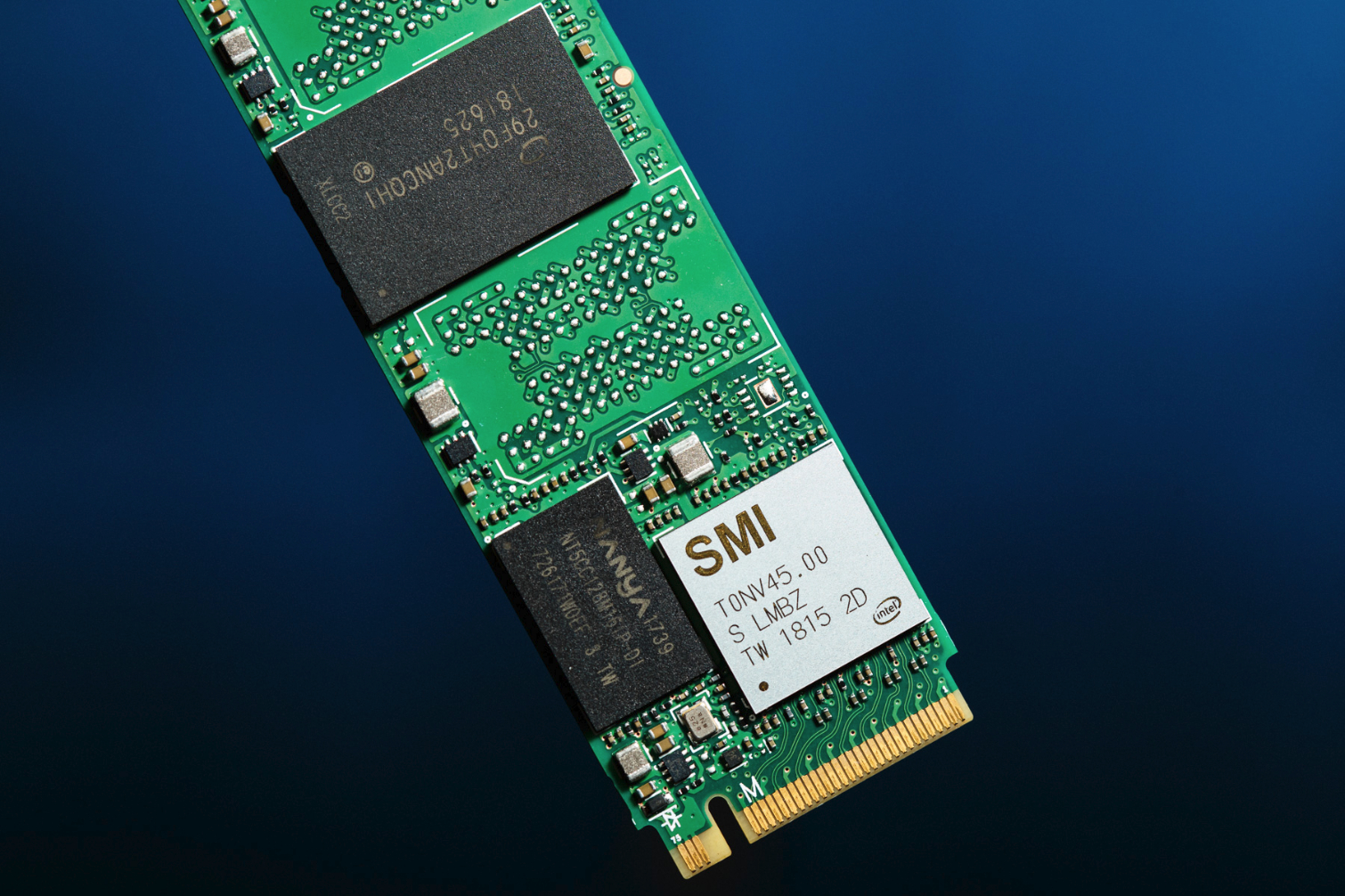
While QLC sounds too expert to be true, information technology'due south not. Intel has a strong track record for developing new and innovative storage engineering. The company was the first to bring NVMe SSDs to market place four years ago with the Intel SSD 750 serial, and information technology also adult the exotic 3D XPoint memory that information technology uses in the Optane products.
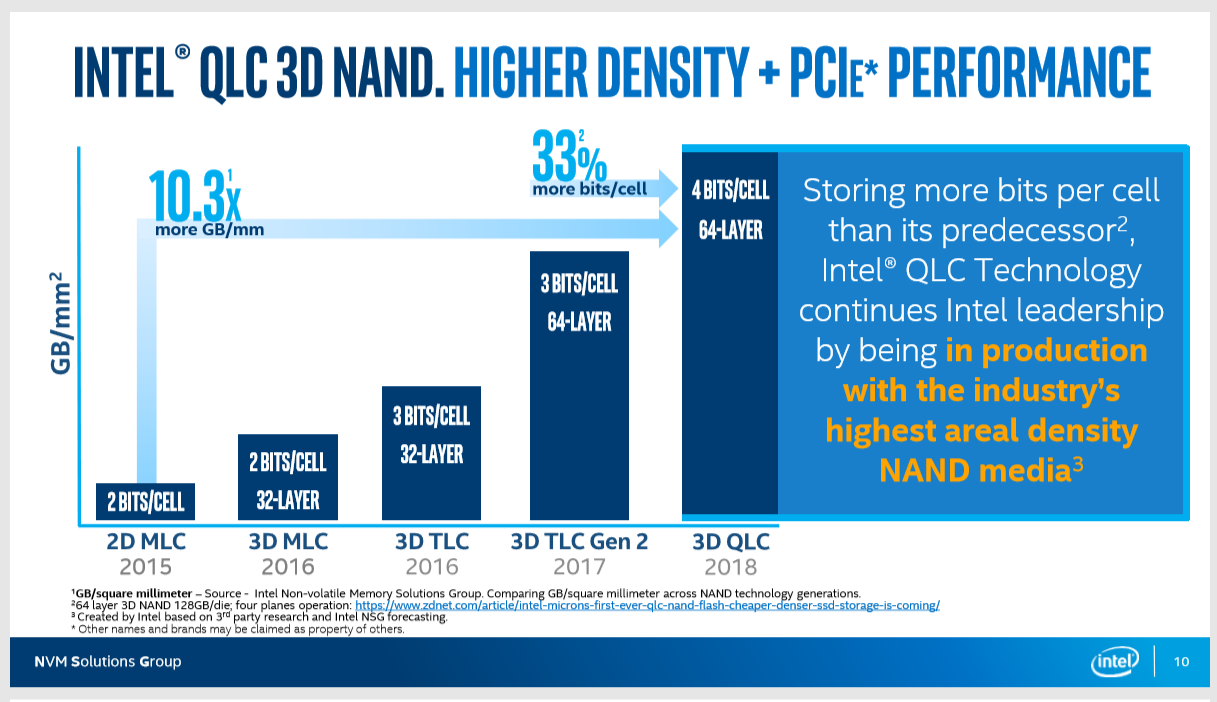
Intel's 64-layer 3D QLC flash technology dramatically boosts wink storage chapters. MLC flash stores two $.25 per cell and TLC flash stores iii, just QLC crams 4 bits into each cell. The 33% increment in density ultimately equates to more than storage chapters for less money. Intel'southward QLC flash enables up to one ane-terabit (125GB) of storage capacity in a unmarried dice. SSD vendors tin can pack up to 16 die into a single bundle, which means QLC enables up to 2TB per packet.
Just like Intel's other flash technology, QLC wink leverages the tried-and-true vertical floating gate wink cell design. Competing flash from other foundries use charge trap designs.
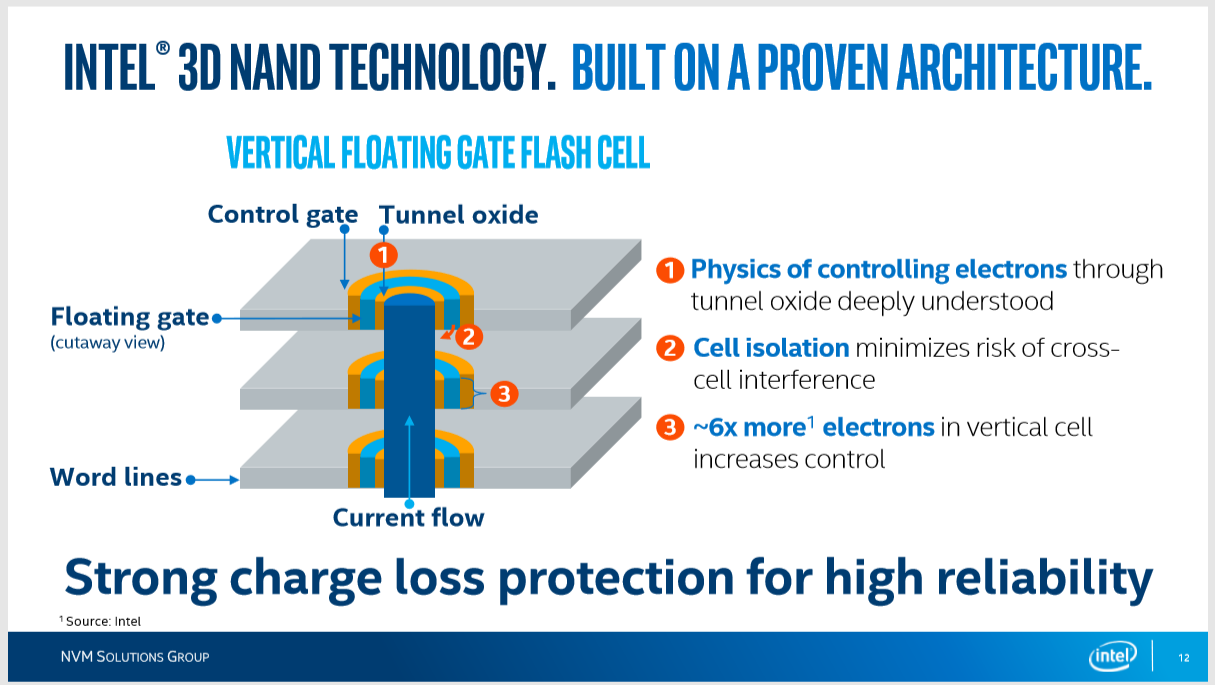
High-chapters and inexpensive wink is music to anybody's ears, just QLC has an Achilles heel. Well, two. QLC NAND has lower write performance and less endurance than MLC or TLC flash because it stores 16 unlike charge levels per cell to stand for four bits of data. Due to the concrete characteristics of wink, it's a claiming to store and alter xvi charge levels at the nanometer scale, especially as the flash ages. Cell-to-cell interference complicates the chore. Intel claims the 3D floating gate design helps isolate the cells to reduce interference. In either example, sophisticated error correction algorithms, such as LDPC, are a cardinal ingredient to boosting endurance.
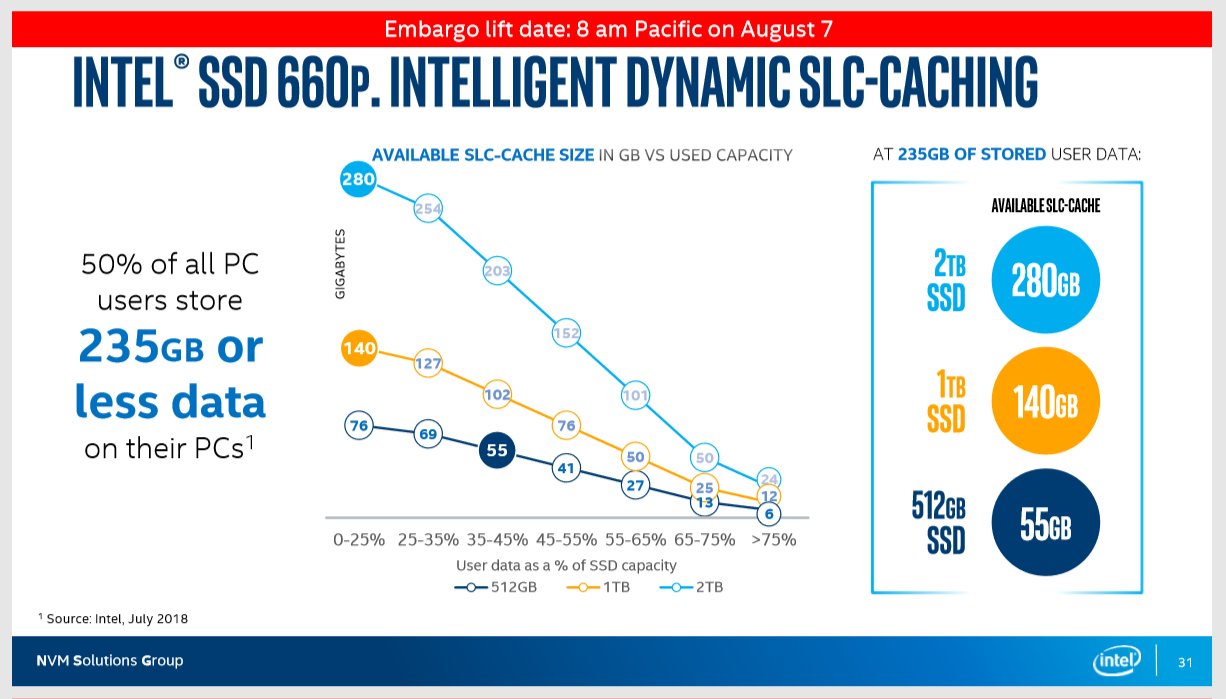
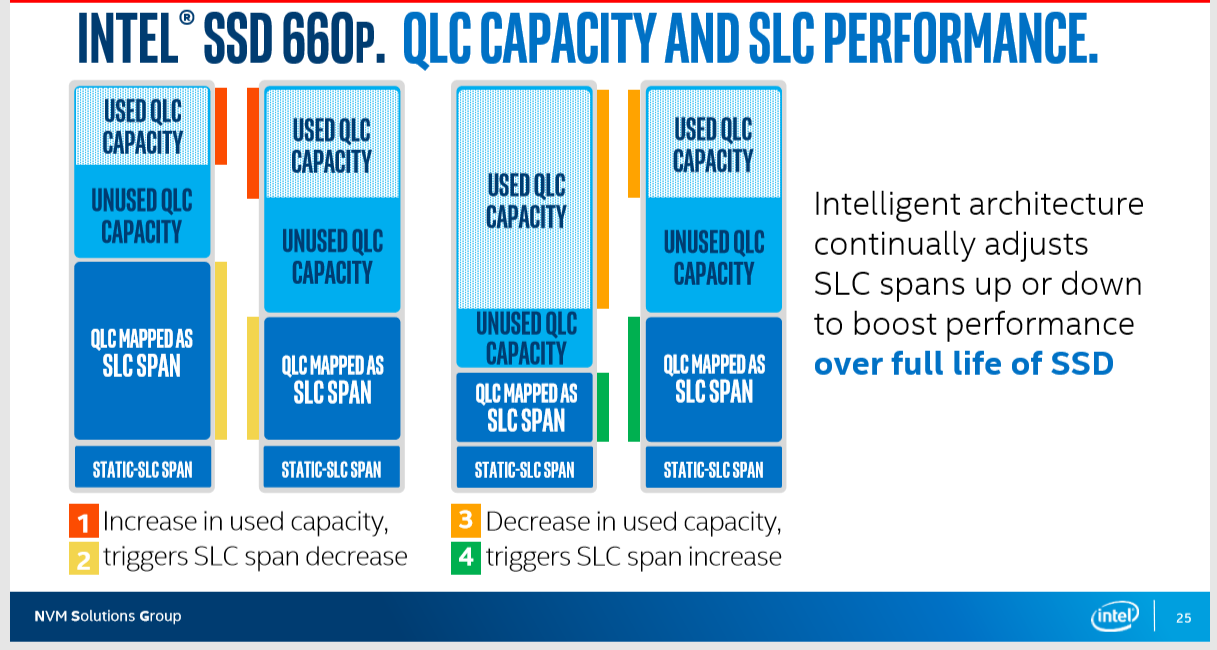
Intel sidesteps many of the performance challenges associated with QLC flash by tweaking the firmware and using intelligent idle time functioning adjustments. Intel's Intelligent Dynamic SLC-Caching, which uses a puddle of fast SLC flash to boost operation for incoming write data, takes a two-step approach.
Commencement, the 660p has a static SLC enshroud that is 6GB, 12GB, or 24GB, depending upon SSD capacity. The static cache capacity never changes, but the SSD has a larger dynamic SLC cache pool that boosts performance further. The dynamic cache capacity adjusts bi-directionally based upon the amount of data stored on the SSD. In other words, the cache shrinks every bit you lot fill upwardly the drive but expands as you delete items. Higher-capacity 660p's have larger dynamic SLC caches, as outlined in the nautical chart above.
The SLC pool flushes to the QLC flash during idle periods, just Intel has a new on-demand performance heave option if you demand your SLC performance dorsum right away afterwards bombarding the drive with writes. The feature allows you to flush the SLC cache to the QLC flash manually. Intel added this feature to its SSD optimizer in SSD Toolbox version 3.5.3.
Specifications
| Production | Intel SSD 660P 512GB | Intel SSD 660P 1TB | Intel SSD 660P 2TB |
|---|---|---|---|
| Pricing | $64 | $97 | $204 |
| Capacity (User / Raw) | 512GB / 512GB | 1024GB / 1024GB | 2048GB / 2048GB |
| Course Factor | G.2 2280 (unmarried-sided) | M.2 2280 (unmarried-sided) | M.two 2280 (single-sided) |
| Interface / Protocol | PCIe 3.0 x4 / NVMe 1.3 | PCIe iii.0 x4 / NVMe 1.iii | PCIe iii.0 x4 / NVMe ane.iii |
| Controller | SMI 2263 | SMI 2263 | SMI 2263 |
| DRAM | NANYA DDR3L | NANYA DDR3L | NANYA DDR3L |
| Memory | IMFT 64L 3D QLC | IMFT 64L 3D QLC | IMFT 64L 3D QLC |
| Sequential Read | one,500 MB/s | 1,800 MB/s | ane,800 MB/s |
| Sequential Write | 1,000 MB/south | one,800 MB/s | one,800 MB/s |
| Random Read | ninety,000 IOPS | 150,000 IOPS | 220,000 IOPS |
| Random Write | 220,000 IOPS | 220,000 IOPS | 220,000 IOPS |
| Encryption | AES-256 | AES-256 | AES-256 |
| Endurance | 100 TBW | 200 TBW | 400 TBW |
| Warranty | 5-Years | five-Years | v-Years |
| Part Number | SSDPEKNW512G8 | SSDPEKNW010T8 | SSDPEKNW020T8 |
Intel rates the 1TB and 2TB models for 1.8 GB/s of sequential read/write throughput, simply the 512GB model steps back to 1.5/1 GB/s read/write. The write specification is based on the 660p's dynamic SLC cache, however, and so the drive could slow during extended write workloads when the workload spills over to the native QLC flash. We simulated the condition with a worst-case test, and the 1TB model fell to ~100 MB/south after writing 130GB of data from an empty land. Given the size of the 660p's SLC caches, you will likely never encounter this condition.
The 2TB Intel SSD 660p provides up to 220,000/200,000 random read/write IOPS, but the smaller models have slower random read performance. Our 1TB model provides up to 150,00 random read IOPS.
| Product | TBW | DWPD | Warranty |
|---|---|---|---|
| Intel SSD 660p 1TB | 200 | 0.11 | v |
| Intel SSD 600p/760p 1TB | 576 | 0.32 | five |
| Samsung 860/970 EVO 1TB | 600 | 0.33 | v |
| WD Black 1TB | 600 | 0.33 | v |
| WD Blueish 3D 1TB | 400 | 0.ii | 3 |
| Crucial MX500 1TB | 360 | 0.two | 5 |
Intel rates the 660p'southward endurance every bit 100TBW per 512GB, or only over 0.ane drive write per day over the v-year warranty period. The 660p's endurance is (on average) 33 percent lower than other PCIe based SSDs and roughly half that of budget SATA SSDs. Two hundred terabytes of write endurance might non seem like a lot, but Intel says it should be enough for near lite, bursty workloads in desktop PCs. If your workloads are more than intense, similar frequent big file transfers, video processing, or workstation-class applications, other more endurant SSDs are a better choice.
The 660p features AES-256 encryption with Pyrite 1.0 and two.0 back up, which is a nice addition for the security conscious.
A Closer Await
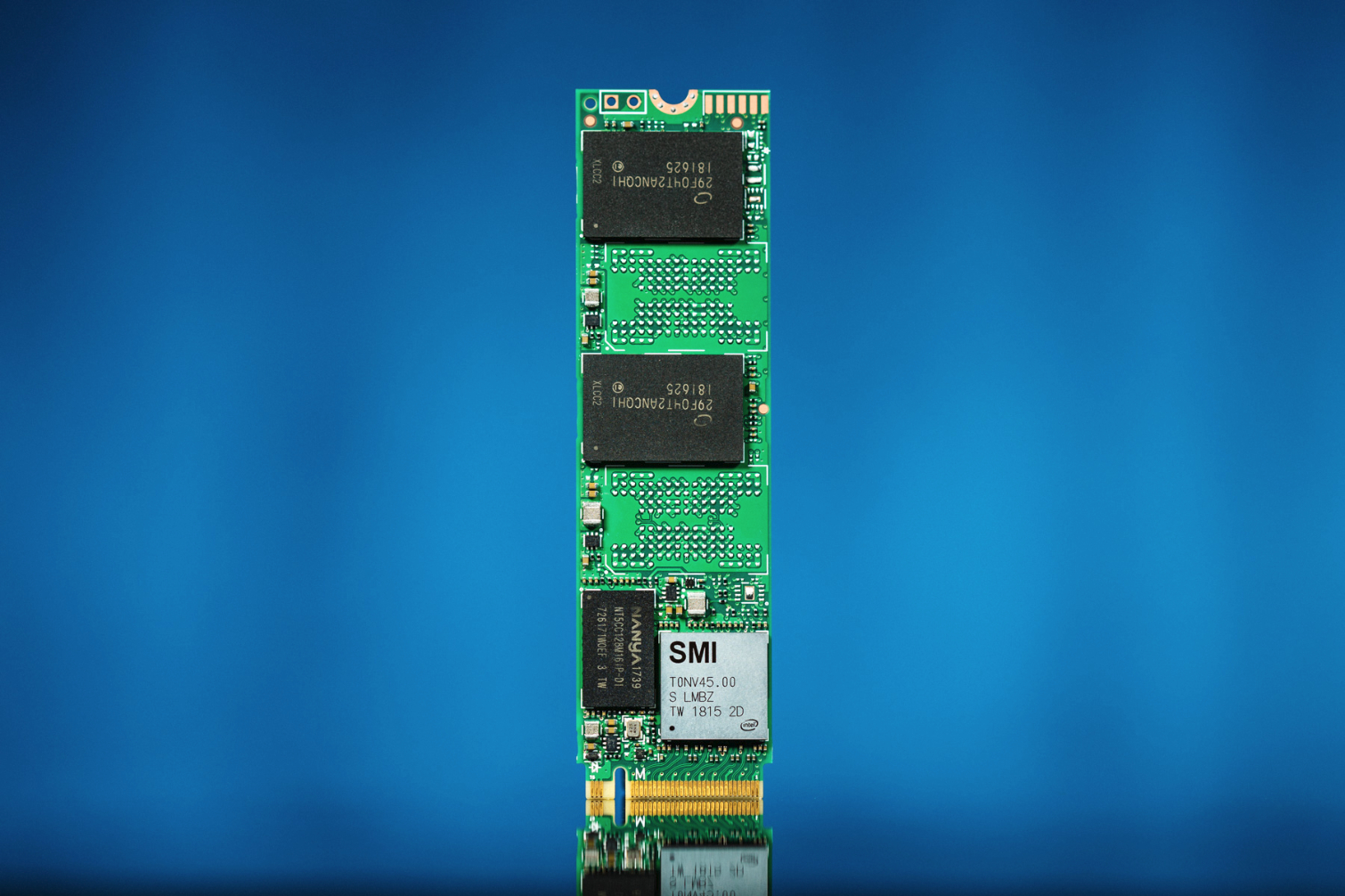
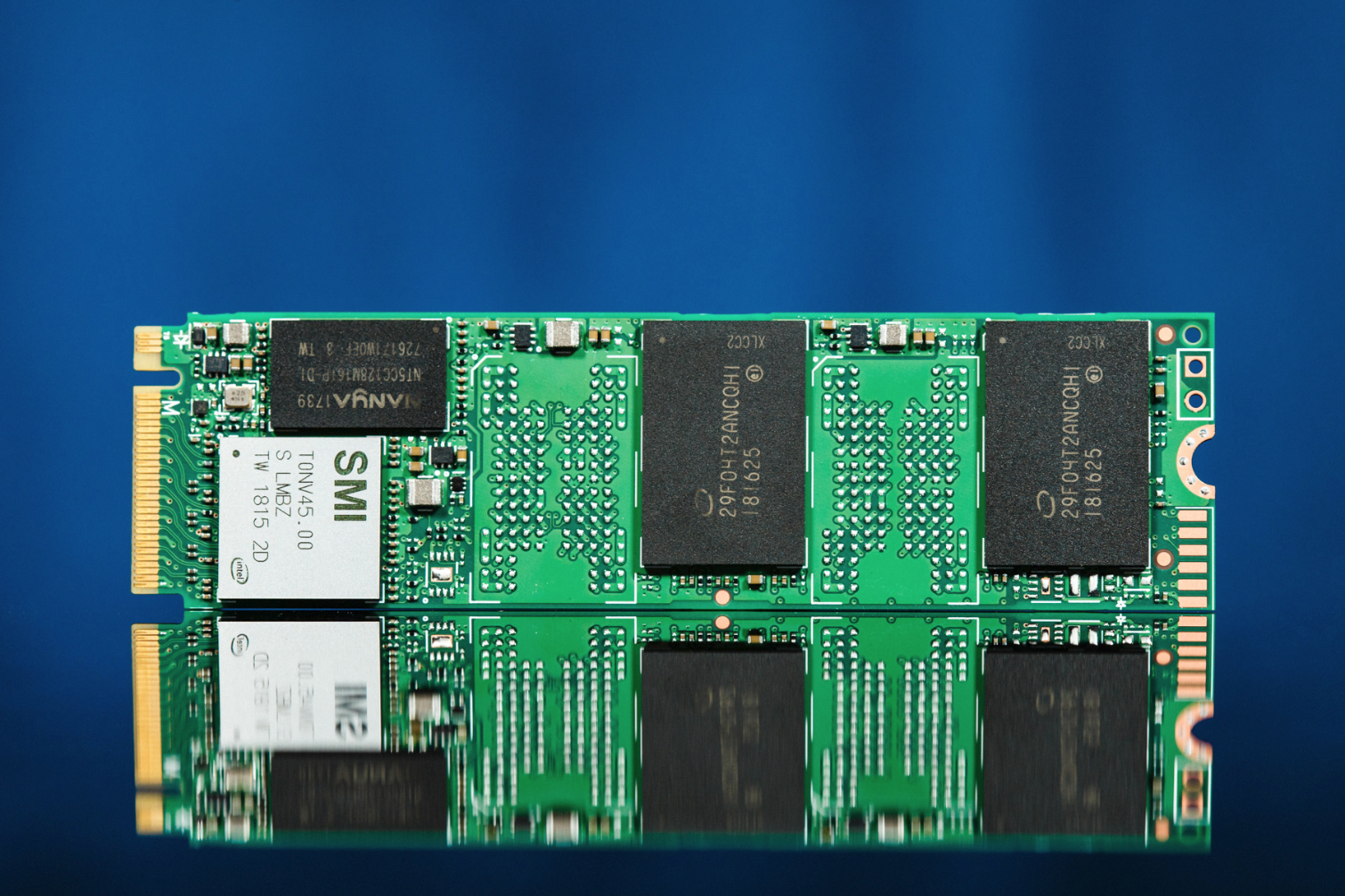
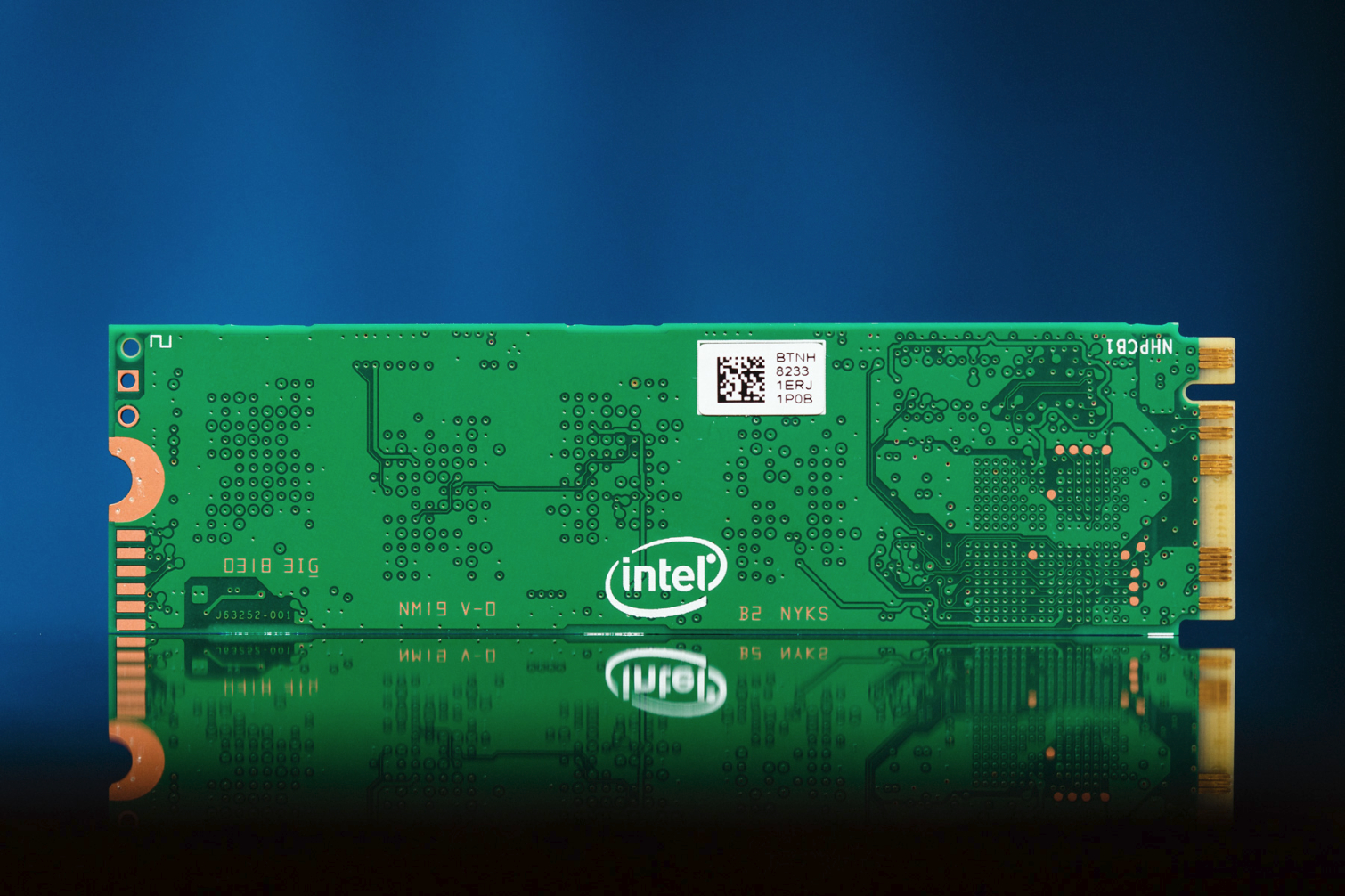
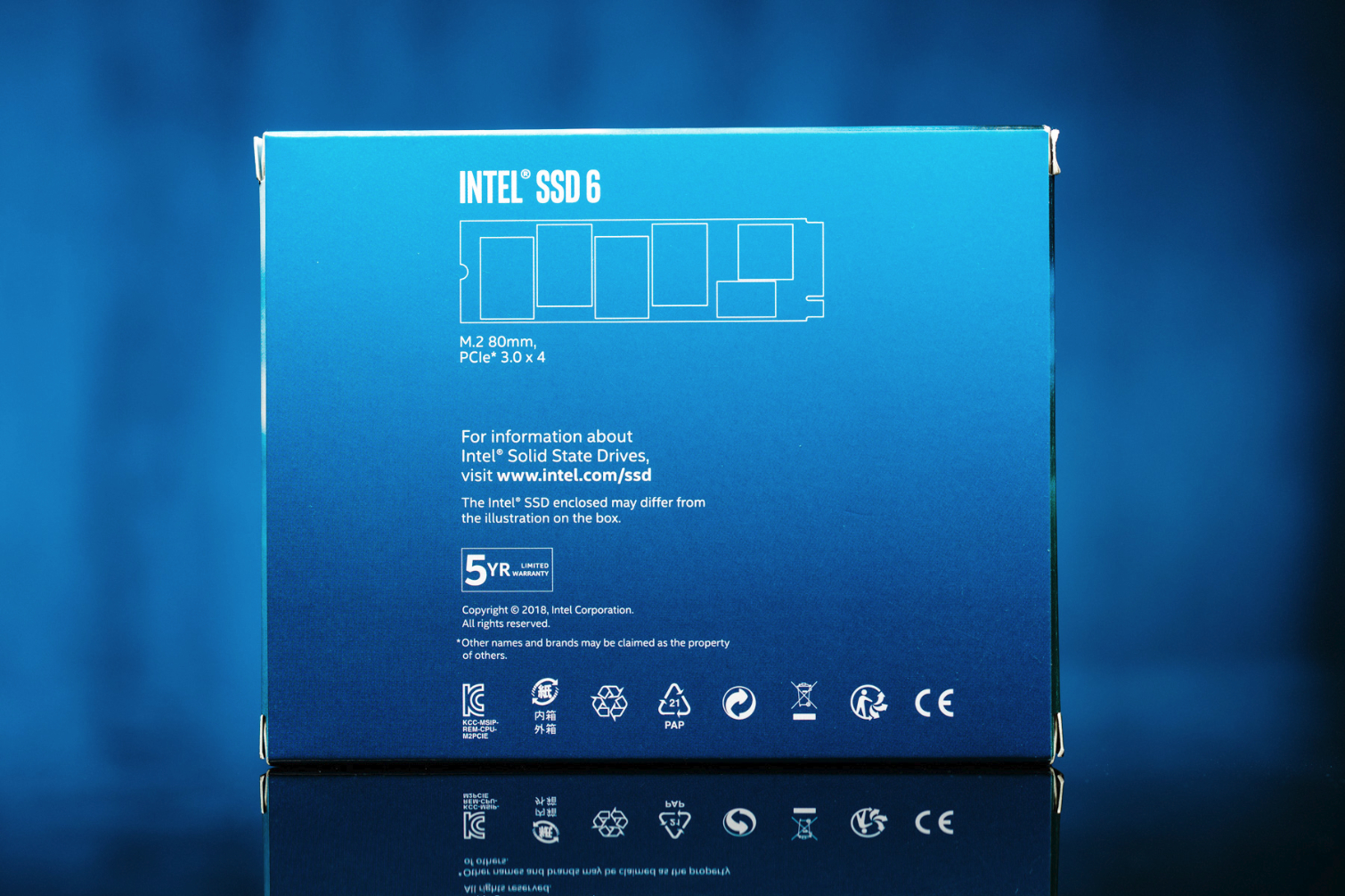
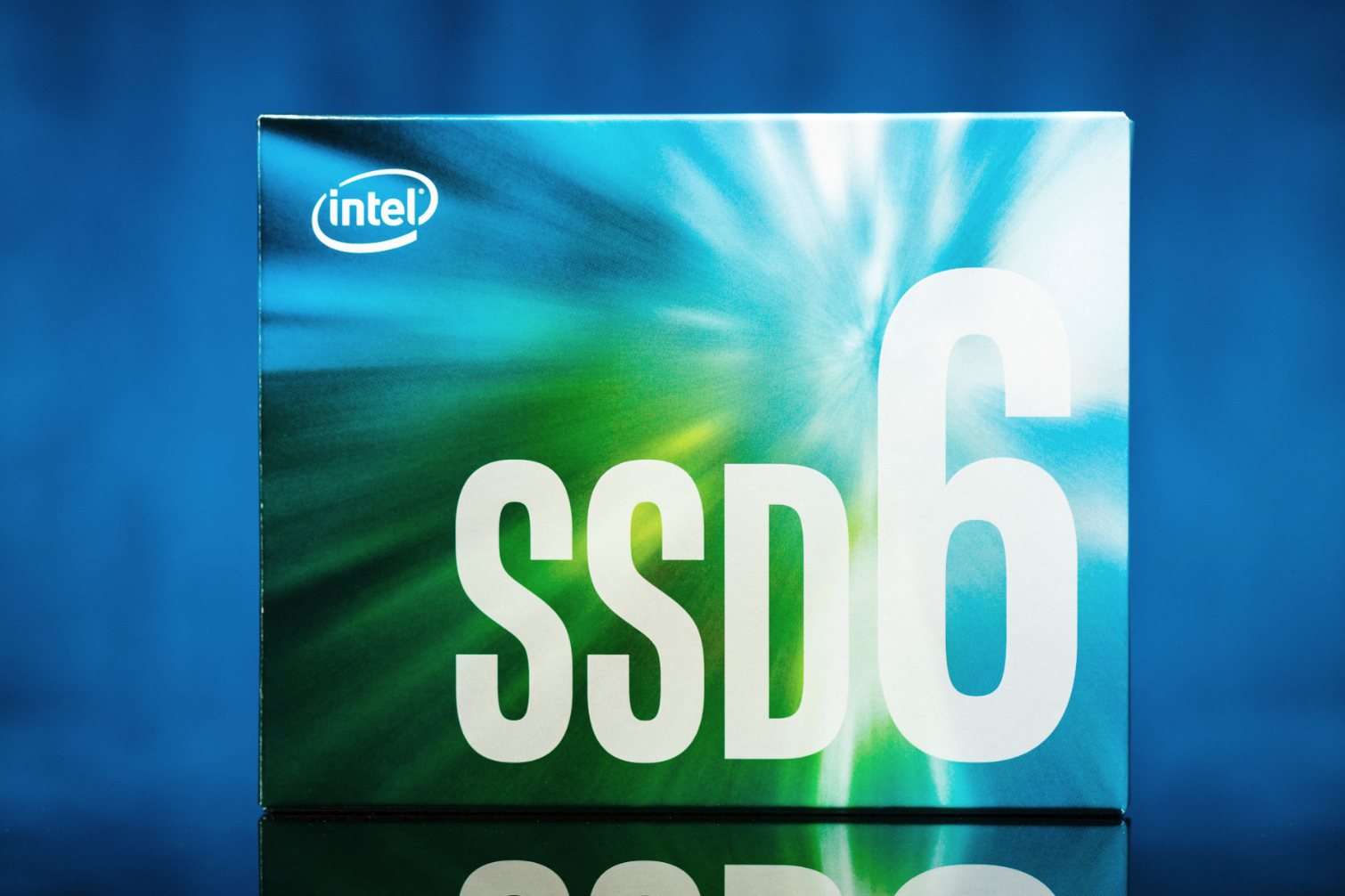
The Intel SSD 660p is a PCIe three.0 x4 SSD that comes in an Grand.2 2280 unmarried-sided course cistron. It communicates with the host system via the NVMe 1.three protocol and weighs in at just 5.5g. There are two 512GB 64-layer QLC flash emplacements on the PCB of the 1TB capacity.
The 660p comes with SMI's 2263 SSD controller and Intel'south proprietary firmware. A single 256MB NANYA DDR3L DRAM chip flanks the controller. Most SSDs have a 1MB of DRAM to 1GB of wink ratio, but the Intel 660p has 1MB of DRAM per 4GB of wink. Intel could be compressing the LBA map or might have implemented the Host Memory Buffer (HMB) feature, which stores a portion of the LBA map in system memory.
More than: Best SSDs
More than: How We Test HDDs And SSDs
MORE: All SSD Content
Source: https://www.tomshardware.com/reviews/intel-ssd-660p-qlc-nvme,5719.html
0 Response to "Intel 660p M2 2280 2tb Nvme Pcie 30 X4 Review"
Post a Comment